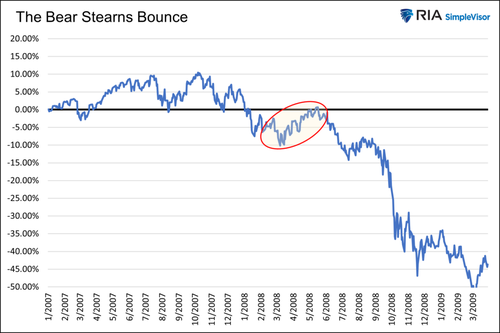[This month, I’m serializing my 2003 Harvard Law Review article, The Mechanisms of the Slippery Slope; I’ll begin here with a slightly reordered introduction, which generally summarizes my analysis, but if you want more details, you’ll get them in later posts.]
Consider one classic slippery slope claim (more shortly on why it makes sense to so label it): the claim that gun registration (A) might lead to gun confiscation (B). (This was written before D.C. v. Heller (2008) held that gun confiscation is unconstitutional; but Heller, which is a 5-4 decision, may be seen as potentially vulnerable to overruling in the future, and in any event may leave room for confiscation of particular categories of weapons.) Setting aside whether we think this slippery slope is likely—and whether it might actually be desirable—it turns out that the slope might happen through many different mechanisms, or combinations of mechanisms:
- Registration may change people’s attitudes about the propriety of confiscation, by making them view gun possession not as a right but as a privilege that the government grants and therefore may deny.
- Registration may be seen as a small enough change that people will reasonably ignore it (“I’m too busy to worry about little things like this”), but when aggregated with a sequence of other small changes, registration might ultimately lead to confiscation or something close to it.
- The enactment of registration requirements may create political momentum in favor of gun control supporters, thus making it easier for them to persuade legislators to enact confiscation.
- People who don’t own guns are more likely than gun owners to support confiscation. If registration is onerous enough, over time it may discourage some people from buying guns, thus decreasing the fraction of the public that owns guns, decreasing the political power of the gun-owning voting bloc, and therefore increasing the likelihood that confiscation will become politically feasible.
- Registration may lower the cost of confiscation—since the government would know which people’s houses to search if the residents don’t turn in their guns voluntarily—and thus make confiscation more appealing to some voters.
- Registration may trigger the operation of another legal rule that makes confiscation easier and thus more cost-effective: if guns weren’t registered, confiscation would be largely unenforceable, since house-to-house searches to find guns would violate the Fourth Amendment; but if guns are registered some years before confiscation is enacted, the registration database might provide probable cause to search the houses of all registered gun owners.
In the registration-to-confiscation scenario, only the latter two mechanisms seem fairly plausible to me; in other scenarios, others may be more plausible. And there are of course mechanisms that may work in the opposite direction, so that decision A may under some political conditions make decision B less likely. (For instance, gun registration might energize gun-rights groups, and lead them to be even more effective in fighting broader gun controls; or if gun registration seems ineffective or unduly intrusive, some formerly pro-gun-control voters might become more skeptical of gun controls generally.)
But the important point is that being aware of all these phenomena, including the several kinds of slippery slope mechanisms, can help us (as citizens and policymakers) think through all the possible implications of some decision A—and can help us (as advocates) make more concrete and effective arguments for why A would or would not lead to B. Even if you are skeptical of one kind of slippery slope claim, you may find that others are worth considering.
I hope this has sufficiently intrigued you; now, let me explain how I define slippery slope arguments, why I think this definition makes sense, and how I think we can helpfully think about the subject.
Say you are a legislator, a voter, a judge, a commentator, or an advocacy group leader. You need to decide whether to endorse decision A, for instance a partial-birth abortion ban, a limited school choice program, or a gun registration mandate.
You think A might be a fairly good idea on its own, or at least not a very bad one. But you’re afraid that A might eventually lead other legislators, voters, or judges to implement policy B, which you strongly oppose—for instance, broader abortion restrictions, an extensive school choice program, or a total gun ban.
What does it make sense for you to do, given your opposition to B, and given your awareness that others in society might not share your views? Should you heed James Madison’s admonition that “it is proper to take alarm at the first experiment on our liberties,” and oppose a decision that you might have otherwise supported were it not for your concern about the slippery slope? Or should you accept the immediate benefits of A, and trust that even after A is enacted, B will be avoided?
Slippery slopes are, I will argue, a real cause for concern, as legal thinkers such as Madison, Jackson, Brennan, Harlan, and Black have recognized, and as our own experience at least partly bears out: we can all identify situations where one group’s support of a first step A eventually made it easier for others to implement a later step B that might not have happened without A (though we may disagree about exactly which situations exhibit this quality). Such an A may not have logically required the corresponding B, yet for political and psychological reasons, it helped bring B about.
But, as thinkers such as Lincoln, Holmes, and Frankfurter have recognized, slippery slope objections can’t always be dispositive. We accept, because we must, some speech restrictions. We accept some searches and seizures. We accept police departments, though creating such a department may lead to arming it, which may lead to some officers being willing to shoot innocent civilians, which may eventually lead to a police state (all of which has happened with the police in some places). Yes, each first step involves risk, but it is often a risk that we need to take.
This need makes many people impatient with slippery slope arguments. The slippery slope argument, opponents suggest, is the claim that “we ought not make a sound decision today, for fear of having to draw a sound distinction tomorrow.” To critics of slippery slope arguments, the arguments themselves sound like a slippery slope: if you accept this slippery slope argument, then you’ll end up accepting the next one and then the next one until you eventually slip down the slope to rejecting all government power (or all change from the status quo), and thus “break down every useful institution of man.”
Exactly why, the critics ask, would accepting (for instance) a restriction on “ideas we hate” “sooner or later” lead to restrictions on “ideas we cherish”? If the legal system is willing to protect the ideas we cherish today, why won’t it still protect them tomorrow, even if we ban some other ideas in the meantime? And even if one thinks slippery slopes are possible, what about cases where the slope seems slippery both ways—where both alternative decisions might lead to bad consequences?
My aim here is to analyze how we can sensibly evaluate the risk of slippery slopes, a topic that has been surprisingly underinvestigated. I think the most useful definition of a slippery slope is one that covers all situations where decision A, which you might find appealing (or at least not highly objectionable), ends up materially increasing the probability that others will bring about decision B, which you oppose. {Slippery slope arguments are sometimes made by people who dislike both A and B: the arguer may say “Even if A is good on its own, it might lead to a bad B,” while really thinking that A is bad itself. But the argument is framed this way only because the arguer thinks some listeners may like A but oppose B. These listeners need to decide whether to oppose A given the risk that it might lead to B, even if the arguer need not determine this (since he already opposes A).}
If you are faced with the pragmatic question “Does it make sense for me to support A, given that it might lead others to support B?,” you should consider all the mechanisms through which A might lead to B, whether they are logical or psychological, judicial or legislative, gradual or sudden. You should consider these mechanisms whether or not you think that A and B are on a continuum where B is in some sense more of A, a condition that would in any event be hard to define precisely. You should think about the entire range of possible ways that A can change the conditions—whether those conditions are public attitudes, political alignments, costs and benefits, or what have you—under which others will consider B.
The slippery slope is a familiar label for many instances of this phenomenon: when someone says “I oppose partial-birth abortion bans because they might lead to broader abortion restrictions,” or “I oppose gun registration because it might lead to gun prohibition,” the common reaction is “That’s a slippery slope argument.” But whatever one calls these arguments, the important point is that a person is asking the question “Does it make sense for me to support A, given that it might lead others to support B?,” which breaks down into “How much do I like A?,” “How much do I dislike B?,” and, the focus of this Article, “How likely is A to lead others to support B?” And this last question in turn requires us to ask “What are the mechanisms by which A can lead others to support B?”
These mechanisms will be the focus of this Article. Slippery slopes, camel noses, thin ends of wedges, floodgates, and acorns are metaphors, not analytical tools. The Article aims to describe the real-world paths that the metaphors represent—to provide a framework for analyzing and evaluating slippery slope risks by focusing on the concrete means through which A might possibly help cause B. This analysis should also help people construct slippery slope arguments (and counterarguments); but the primary goal is understanding the means through which slippery slopes may actually operate, and not simply the rhetorical structure of slippery slope arguments.
The post Slippery Slope June: An Introduction to Thinking About Slippery Slope Arguments appeared first on Reason.com.
from Latest https://ift.tt/tcqh6aH
via IFTTT








